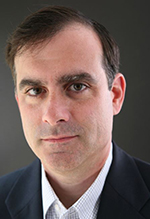Clinical Outsourcing Models: Still A Lot Of Churn And Uncertainty

By Ed Miseta, Chief Editor, Clinical Leader

ISR Reports recently published the third edition of its Clinical Development Outsourcing Models report. The report features feedback from 117 highly screened clinical development decision-makers from sponsor organizations. According to Andrew Schafer, president at ISR Reports, the report is ideal for both sponsor organizations and their service providers.
I spoke to Schafer about the report, what we can learn from the responses, and what we can expect to see in clinical outsourcing models moving forward.
Ed Miseta: You recently published the third edition of Clinical Development Outsourcing Models. Were there any surprises that came out of this report?
 Andrew Schafer: Being the third edition of this report, we can really see how the clinical development industry has both changed and not changed over the past five years. One point that really struck me was that nearly two-in-five survey respondents (40 percent) disagreed with the statement that they have found the clinical development outsourcing model(s) that work(s) best for them. The percentage has actually increased since the last report in 2015, making the data point much more interesting.
Andrew Schafer: Being the third edition of this report, we can really see how the clinical development industry has both changed and not changed over the past five years. One point that really struck me was that nearly two-in-five survey respondents (40 percent) disagreed with the statement that they have found the clinical development outsourcing model(s) that work(s) best for them. The percentage has actually increased since the last report in 2015, making the data point much more interesting.
The problem with that number is that it leads to churn and uncertainty for both the sponsor organizations and the service providers. Think of all that has to happen from a costing, technology, SOP development, regulatory, communications, decision-making, and operational standpoint if or when a large pharma company changes its outsourcing model from a therapeutically-aligned preferred provider model to an FSP (functional service provider) model.
Miseta: You look at seven different clinical development outsourcing models. Have you seen a change over the years in how companies are opting to use these different models?
Schafer: This report analyzes how much and why sponsors use any of seven different outsourcing models. These include, Preferred Provider, Fee-For-Service, FSP, Hybrid Full Service/FSP, In-Sourced, Compound or Program-based, and Sole-Source. Over the past five years we have seen a shift to a higher concentration of "preferred provider" models coming at the expense of “non-preferred provider fee for-service/full service, trial-by-trial”
I’m not entirely sure why we are seeing this trend, but it may have to do with the small- and mid-sized firms trying out the preferred provider model that is being used by larger sponsor companies. Over 80 percent of large companies use that model, so smaller firms may be testing those waters as well. Any growth in that model almost has to come from the smaller companies.
Miseta: Your report found that the average respondent reported using 2.2 models. Are pharma companies using different models for different purposes?
Schafer: Yes, especially at the larger sponsor companies. In the larger companies, executives have so many clinical development needs and are running so many trials that using multiple models almost becomes a necessity.
A company that has been conducting studies in a certain therapeutic area for a long time will be well versed in how to conduct those trials. For those trials they are comfortable using a preferred provider model because it allows them to select a CRO they know well and have been using for years. But those large pharma companies will often acquire a compound in which they have limited in-house expertise. In those instances, it might make more sense for them to use a different model.
In some trials, data collection and management activities can become fairly routine and follow the same established processes. So that happens to be one of those functions that would fit well in a FSP model.
Miseta: You noted that most respondents do not feel they have found the model that works best for them. Does your data indicate whether most respondents are happy with the model(s) they have chosen to use?
Schafer: Yes, and we have determined that they are not. On average, respondents report that most models have performed below their expectations. One of the more interesting and valuable parts of this report is the identification of benefits and drawbacks for each model. Sponsors will be able to use this information to evaluate which models might work best for them based on responses from peers who have used these models. Service providers will be able to see where the various models are failing and put measures in place to address potential problems.
Miseta: For companies that use preferred provider lists, do they seem to be using more or fewer providers?
Schafer: More. Without a doubt. Data from this report meshes very well with data from our other reports and the general trend is for an increase in the number of preferred providers. What’s also interesting is the cycle time for re-evaluating preferred providers. Roughly 30 percent of respondents indicated they do not have a set cycle time to re-evaluate preferred providers, which we found interesting.
Large pharma companies tend to re-evaluate partners based on performance, but doing so also allows them to periodically re-evaluate costs by having their service providers re-bid. For that reason, we expect most companies to have a set cycle for performing these re-evaluations.
This is not a problem for large companies that have the personnel and resources to perform these evaluations. Therefore, I would hypothesize that the companies not having a set cycle time are the small- to mid-sized companies that do not have an outsourcing department with individuals dedicated to performing the task.
Miseta: What functions are pharma companies most likely to outsource?
Schafer: We found that it really varies and depends on the model being used. We looked at functions for several of the models including FSP, Hybrid Full Service/FSP, and In-Sourced because those made the most sense. Let’s look at “data management” as an example function. For the FSP model, it ranks near the top in terms of use. For the Hybrid Full Service/FSP model, it ranks near the middle in terms of distribution between FSP and Full-service. For in-sourced, it’s in the upper third. Therefore there is certainly some variability in terms of which functions are matching which models.
Miseta: What factors are causing companies to change their outsourcing model?
Schafer: We asked respondents what would cause them to change and the top two responses were “The trial requires unique equipment or technology” and “The trial requires a special/unique patient population (orphan, pediatric).” But that also provides a great opportunity for a service provider that is trying to break into a sponsor organization. As a service provider, you should always look for these opportunities or figure out a way to create them yourself.
Miseta: The Preferred Provider model continues to grow in popularity, with 34 percent of work outsourced in that manner (compared to 27 percent in 2015). Is this model delivering on what it promised?
Schafer: For most organizations, I would have to say yes. But our data also show that 30 percent of respondents who use this model indicate the model either “somewhat misses my expectations” or “greatly misses my expectations.” That means there is definitely room for improvement.
Miseta: Are there any trends occurring that you expect to continue in the future?
Schafer: I’ll take this from a slightly different angle. There is a saying in clinical development that “every study is different,” and it is. Each trial is unique in some way. While clinical development is a highly regulated process, the players are constantly changing, the technology is constantly changing, and the science is constantly changing. Sponsor organizations and service providers will continually change the way they conduct clinical trials and that includes the models used in order to provide the best service possible at a reasonable cost. What will the future hold? Probably more of the same: Change.
For more information:
The 3rd edition of Clinical Development Outsourcing Models can be found at https://www.isrreports.com/reports/clinical-development-outsourcing-models-3rd-edition/
Sponsors can use the data contained in this report to compare their outsourcing practices and models against industry peers and to see which models are performing better than others. Sponsors can also match up their needs (e.g. resource flexibility versus a desire for improved service provider relationships/deeper partnerships) to see why peers have chosen the models they have.
For CROs, the report will help you keep up-to-date on the various outsourcing models and their use, better understand why sponsors are selecting the models they are, and where the various models break down. This will help ensure your marketing messages and organizations are designed to minimize these barriers and improve performance.
